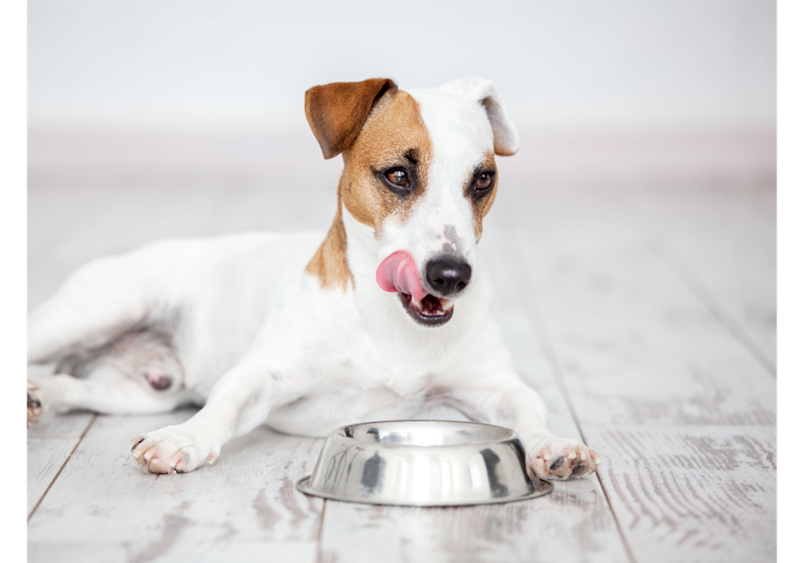
You dedicate countless hours to brushing their coat, bathing them, and keeping them pristine—but when you settle down to cuddle and notice those reddish-brown streaks under their eyes, it's a frustrating reminder that even the most pampered pups aren't immune to those stubborn stains. Thankfully, it's a pretty common problem and there's nothing to worry about!
Some dogs are tear stain magnets, especially light-colored breeds like Maltese and Poodles, but any dog can get them. What's happening is surprisingly simple; tears meet bacteria on the fur, add some fresh air and sunshine, and boom, you've got permanent rusty streaks that seem impossible to remove.
The good news? Most of the time it's just a cosmetic drama. But sometimes those tears are your dog's way of saying "hey, something's bugging my eyes." It could be allergies making them extra weepy, blocked tear ducts, or just annoying hairs poking them all day. The real challenge is figuring out if you're dealing with a beauty problem or a medical issue that needs some attention.
What Exactly Are Dog Tear Stains?
If you're seeing tear stains on your dog for the first time, it's completely understandable to be a bit worried. These reddish-brown marks appear near the inner corners of your dog's eyes and can look pretty dramatic, especially on white and light-colored dogs.
The science behind dog tear stains is actually quite fascinating. Your dog's tears contain tiny iron particles (called porphyrins) that come from breaking down old red blood cells. When those tears sit on fur, they basically rust, kind of like an old garden tool exposed to the elements. Every dog has these iron bits in their tears, but not every dog has tear stains.
Understanding the Common Root Causes of Dog Stains
If you've ever wondered why your sweet pup developed these stains, you're asking exactly the right question. Understanding what causes them helps us figure out the best approach for management and prevention. The biggest factor is often your dog's unique facial structure. Dogs with short noses, large eyes, and flat faces are more likely to develop tear stains because tears spill over the eyelids rather than draining properly through their natural tear ducts.
Here's what commonly triggers tear stains:
Shallow eye sockets that don't provide adequate space for proper tear drainage
Blocked, narrow, or crooked tear ducts
Excessive skin folds around the eyes that trap moisture
Environmental factors like seasonal allergies, dust, or pollen
Food allergies to proteins like chicken, beef, or wheat
Poor water quality with high mineral content
Which Dog Breeds Are Most Susceptible to Tear Stains?
If you've got a flat-faced pup or a white fluffy dog, you've probably already figured out that tear stains just come with the territory. Breeds like Maltese, Shih Tzus, and Bichon Frises basically wear their stains like permanent makeup since those bright white coats make every streak impossible to hide. The squishy-faced crew like Bulldogs, Pugs, and Boxers are working with faces that weren't exactly built for great drainage, so tears just pool up instead of flowing away. Poodles and Cocker Spaniels have their own battles with fluffy hair constantly getting in their eyes and tear ducts that love to get blocked. If your dog is one of these breeds, regular eye cleaning becomes less of a suggestion and more of a necessity if you want to keep those stains from taking over their face.

When Should You Be Concerned About Dog Tear Stains?
Most of the time, tear stains are just your dog's way of looking a little extra dramatic, but sometimes those streaks are actually waving a red flag that something's not right. Here's when you need to stop worrying about appearances and start thinking about a vet visit:
Stains that suddenly go from mild to intense overnight
Thick, goopy discharge that's yellow, green, or cloudy instead of clear tears
Red, puffy, or angry-looking eyes
Your pup constantly scratching at their face like something's bugging them
Crusty gunk building up around the eyes
Any weird smells coming from the eye area
Any one of these is your cue to skip the DIY cleaning and get some professional help instead.
Safe and Effective Solutions for Removing Dog Tear Stains
Let's be real here – you're probably reading this because you're tired of your adorable pup looking like they've been crying for days. The good news? You can absolutely tackle those stubborn stains, but fair warning: it's going to take some patience and daily tender loving care. No magic overnight fixes here, just consistent effort that actually works.
Your best bet is making eye cleaning part of your daily routine, just like brushing their teeth or filling their food bowl. Start each morning with a quick eye check to make sure everything looks bright and clear, then gently wipe away any gunk with a damp cotton ball or pet-safe eye wipe. Always wipe outward from the inner corner to avoid pushing bacteria back into the eye, use a fresh cotton ball for each eye, and make sure to dry the area afterward so you're not creating a breeding ground for more stains.
When it comes to what works, sometimes the simplest solutions are the most effective. Plain warm water on a soft cloth can work wonders, or you can upgrade to pet-safe eye wipes that contain soothing ingredients like aloe or chamomile. For tougher stains, a cooled boric acid solution mixed with distilled water or plain saline solution can help break down those stubborn marks without irritating sensitive eye areas.
Never use products containing tylosin without veterinary guidance, as using antibiotics unnecessarily can lead to resistance problems. Also avoid full-strength hydrogen peroxide, human makeup removers, straight vinegar, or any harsh household chemicals. These products are all too strong or dangerous for your dog's delicate eyes and could cause serious damage. Always stick to gentle, dog-safe products when cleaning your pet's eyes.
Beyond just wiping those eyes daily, what your dog eats and drinks can make a surprising difference in the tear department. Switching from tap water to filtered water cuts down on minerals that worsen staining, and swapping plastic bowls for stainless steel ones reduces bacteria that irritate eyes. If you think food allergies might be causing the waterworks, try a hypoallergenic diet for a few weeks. Add some probiotics for overall health, and here's the obvious fix everyone forgets: keep that hair around their eyes trimmed so it stops poking them like tiny needles all day.

When Professional Care Matters for Tear Stains in Dogs
While there are lots of ways to manage dog tear stains at home, sometimes professional veterinary care becomes necessary. Eye conditions can range from simple irritations to complex issues requiring medical intervention like infections, corneal ulcers, or anatomical abnormalities.
When it comes to your dog's eye health, comprehensive pet insurance coverage becomes invaluable. It allows you to prioritize their well-being without financial stress, especially when unexpected eye issues arise. For instance, a corneal ulcer can require extensive treatment or even surgery, potentially costing $1,000 to $3,000. Knowing you're covered means you can get your furry friend the immediate care they need without hesitation.
Beyond at-home methods, professional grooming can be a game-changer in managing tear stains. Expert groomers skillfully trim delicate hairs around the eyes that trap moisture, preventing irritation and debris buildup. Many also offer specialized, gentle treatments designed to lighten existing stains and improve overall facial hygiene.
For budgeting proactive care, a pet wellness plan is a smart choice. Unlike insurance for accidents, these plans help offset the cost of predictable expenses like annual check-ups, vaccinations, parasite prevention, and yes, some even include grooming services! A manageable monthly fee ensures consistent preventative care, benefiting both eye health and your dog's overall well-being.
Instead of hesitating about whether you can afford that vet visit, having pet insurance means that you can simply prioritize your pup's wellbeing and get them the care they need.
Managing Dog Tear Stains Successfully
Look, dog tear stains are going to test your patience, and that's completely normal. Every pup is different, so don't stress if the first solution doesn't work like magic.
Here's what really matters, those rusty streaks don't say anything about you as a pet parent or your dog's health. Your furry friend doesn't care about looking a little dramatic; they just want cuddles and treats.
Keep trying different approaches, stay consistent, and you'll figure out what works for tear stains in dogs. Even if those stains stick around, you'll still have the happiest, most loved pup on the block, tear stains and all!